Documenting the Fate of the Northern White Rhino
![]()
My fascination with documenting the last two remaining northern white rhinos at Ol Pejeta Conservancy in Kenya began in April 2019 as I launched my personal project Kindred Guardians. The project tells the stories of people who have dedicated their lives to helping animals. The caretakers of the rhinos felt like a perfect way to launch the project.
It took a lot of back and forth and being persistent, but in the end, it paid off and I booked a flight to Kenya. People have asked me how you get access to something like this and to stories in general. For me, I’m making a career pivot into more personal projects and stories related to people and animals. In the beginning, it was challenging because I had very little work in this field. What I do have is a career shooting for high-profile media clients so I highlight them. However, I never embellish and I never promise or mislead them into thinking the story will run in any of these publications, which is unethical and just plain wrong.
For each chapter of my project, I pitch the stories to media outlets after the fact, not before, and I never make promises I can’t keep. I believe in full transparency about the access I’m looking for and being clear about my process after I’ve finished shooting each story. The disadvantage of doing it this way is obviously that I won’t get my expenses paid for by a publication and it also makes it a lot more challenging to get access as most people and organizations will rightfully wonder what’s in it for them.
The advantage of pitching after the fact and why I take this approach is that I’m photographing this project a very particular way and experimenting with my storytelling style so I don’t want to be beholden to any publication. I realize this isn’t a great financial model but that’s why I do commercial work — to fund projects like this.
A personal project is about experimenting and discovering new things about your craft and when you’re on an assignment you don’t have time to do that. The only promises I make to my subjects is I donate a selection of my images to the person/organization and I do my best to pitch the stories afterward while also promoting on my social media network. I’ve reconfigured my Instagram account to focus primarily on this project and it’s been a rich resource for raising awareness and connecting with people in the wildlife world.
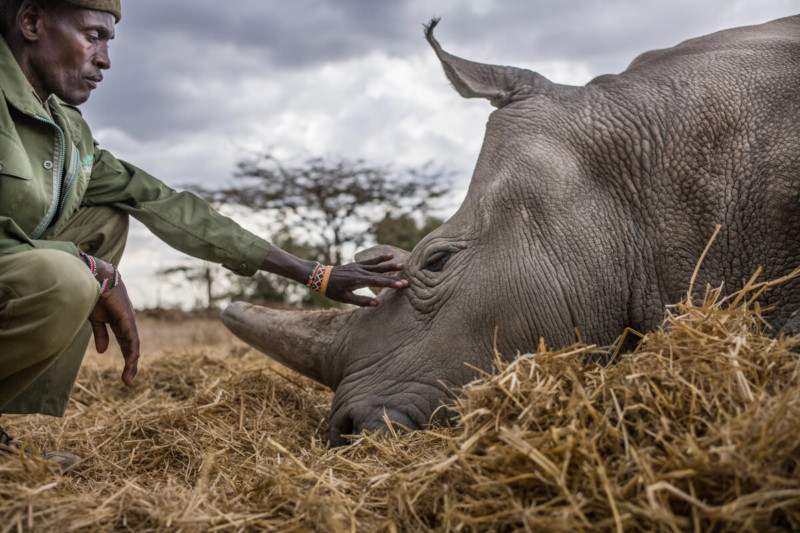
First Visit
I knew right when I arrived in Kenya at Ol Pejeta Conservancy and laid eyes on Fatu and Najin (the last northern white rhinos on the planet) that this story was special and that this wasn’t going to be just a one-time visit.
I’ve covered stories about the illegal rhino trade in Vietnam years ago for TIME magazine and for the UN and it left a mark on me, but this was the first time I’d seen a rhino horn attached to a live rhino and the sadness over the finality of it all felt personal and potent. The whole experience was a whirlwind of emotion; anger and disappointment in humanity and respect and inspiration for the caretakers and rangers.
I spent over a week there documenting the caretakers and rangers and was touched by their dedication and passion for the rhinos. The way my project works is that I typically will only focus on one type of animal and one visit for each chapter but sometimes you must recognize when a bigger story is staring you right in the face, this was one of those times.
Things worked out after that first visit and along with having the first chapter of my long-term project, I got the story published in the Washington Post. They’ve been a great outlet for my project and extremely supportive ever since with several of my other chapters of the project set to be published soon.
I wasn’t the first and only person to cover this story but we got great exposure from my work not just in the Post but I did an exhibition in NYC, a panel talk in NYC on the illegal wildlife trade, and the story also ran in Paris Match and My Modern Met, among others.
Many photographers tend to shy away from doing a story that’s already been done before. It’s something to consider and you never want to repeat or copy other’s work, but stories aren’t owned by any one person. You can always bring a unique angle to a story and do it your way stylistically. That’s the great thing about stories, they can be told so many ways while still be accurate and fair. In addition to that, we live in a new era for self-publishing your work and for reaching people through social media so even if one photographer did the story, you might be able to reach new people and help in your own ways.
I started to build a relationship with Ol Pejeta and we began to collaborate on raising money and awareness about the plight of the rhinos. I stayed in touch with their head of communications Elodie Sampere and she kept me up to date on the latest news about the rhinos.
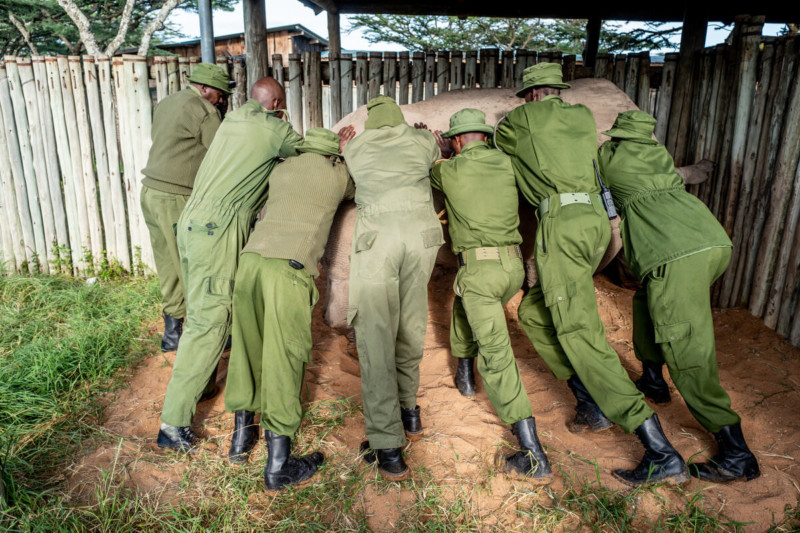
Second Visit
Months after my first visit I was transiting in Hong Kong and I checked my WhatsApp, Elodie from Ol Pejeta messaged me about a historical procedure they were attempting, a collaborative effort of the BioRescue program, the Leibniz Institute for Zoo and Wildlife Research (Leibniz-IZW), Avantea, Dvůr Králové Zoo, Ol Pejeta Conservancy, and the Kenya Wildlife Service.
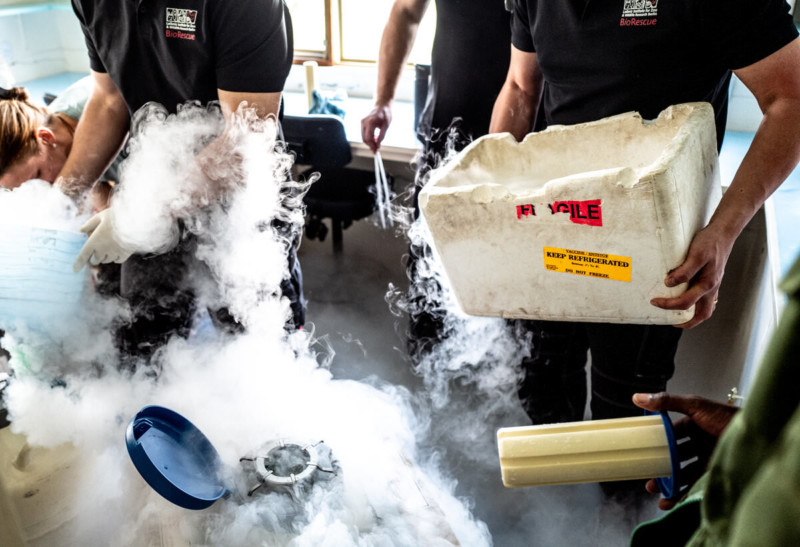
The ovum procedure would involve placing the rhinos under general anesthetic. With an ultrasound to guide them, veterinarians would use a probe to harvest eggs from Najin and Fatu. After the eggs were harvested, they were to be transported to Italy where the embryo would be created. The embryo is stored in liquid nitrogen, the next step would be for the embryos to be transferred to a southern white rhino surrogate mother with hopes for the birth of a northern white rhino calf.
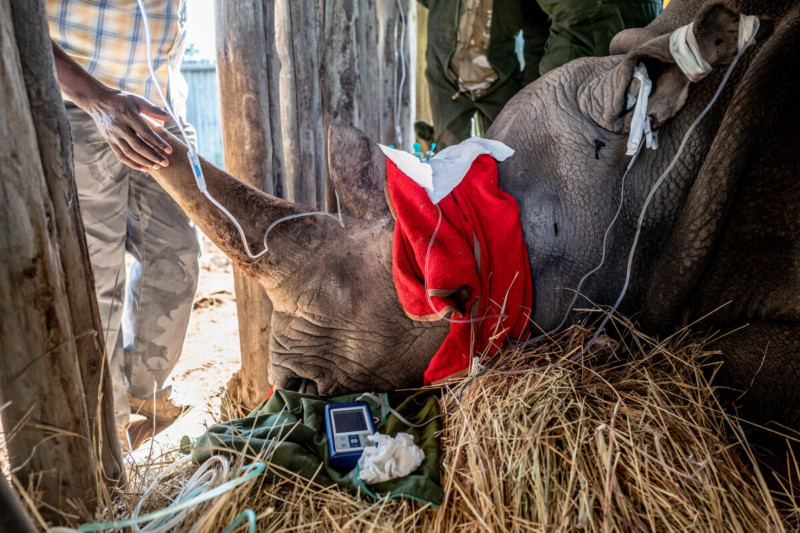
Upon hearing about this Hail Mary attempt, I knew I had to go back to Kenya, but it wasn’t that easy. The decision wasn’t solely up to the conservancy as many organizations and individuals were involved but Elodie fought hard for me to come. For such a procedure like this, it’s extremely stressful for the rhinos and for the veterinarian team so I completely understood their trepidation to have anyone there that wasn’t essential personnel — it’s about trust.
The fate of a species was in their hands and putting such a large animal under anesthesia is always a gigantic risk. One mistake and the population of the species would be down to one, I can’t even imagine that pressure.
Discussions were had and a lot of back and forth and while I missed the first attempt I was granted permission to come for the second attempt along with 2 local photographers and only one other international photographer.
At first, I was conflicted about what kit to bring. For my personal work, I’ve been using a minimalistic set up of a Leica M10D (please let’s not have a Leica debate here in the comments section) coupled with a Leica 35mm, 75mm, and a 135mm. This being an event with other photographers to work around, something I hate doing, I debated taking a more conventional set up of 2 Canons with an army of lenses but I’m moving away from working that way so stayed with my simple set-up. I feel very comfortable with manual focus and with using predominantly a 35mm. I knew the procedure would be covered by 3 other photographers so I could approach it my way with my project in mind but also getting the collaborative team a unique set of images for their press release, something I offered to do.
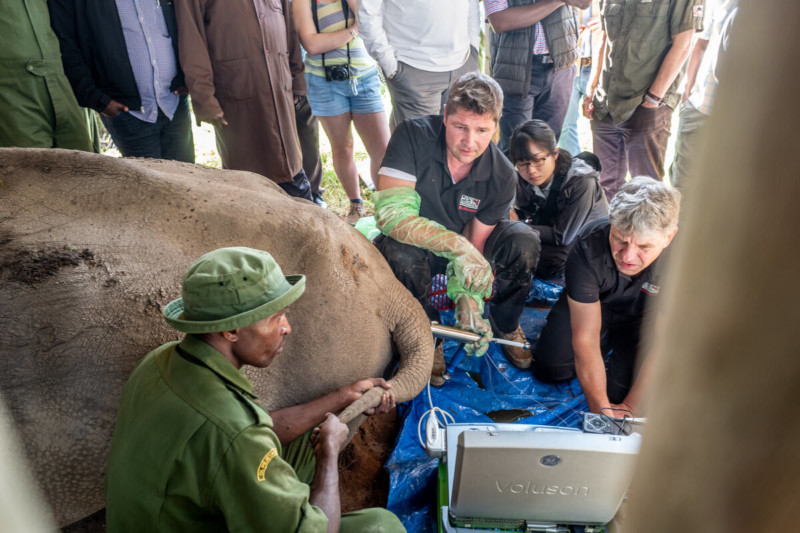
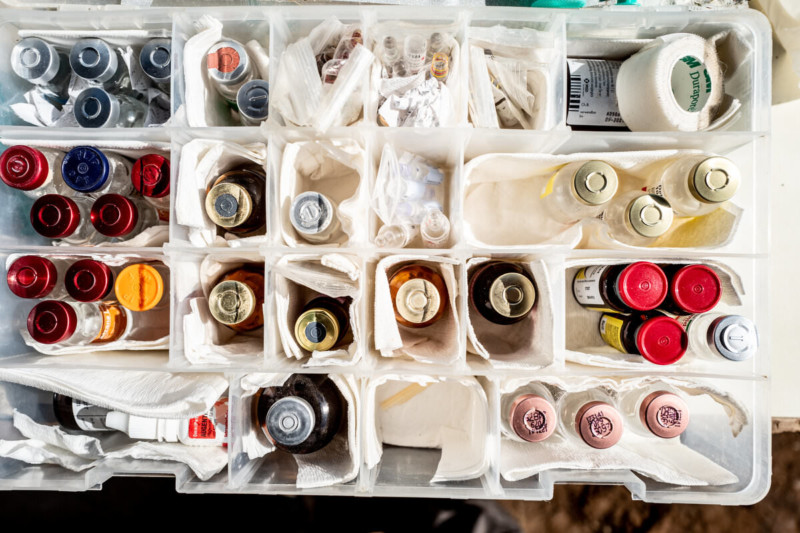
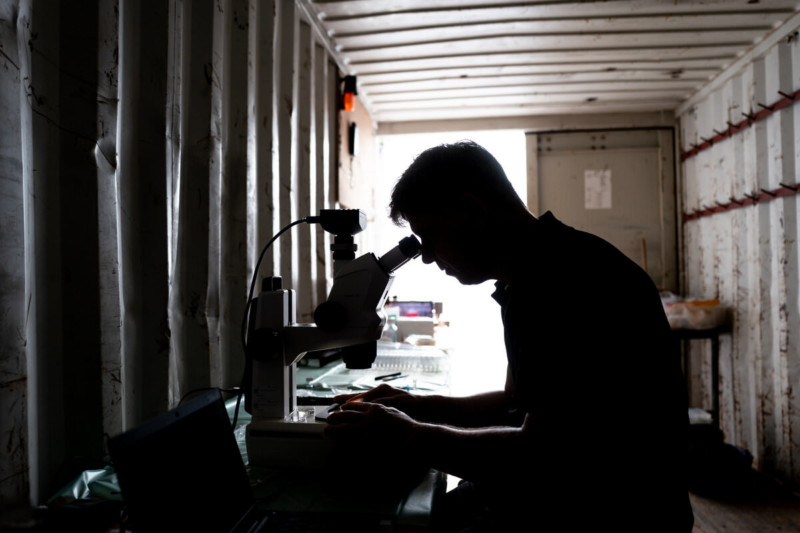
I spent days leading up to the procedure sharing meals and talking with the procedural team and learning more about their work, incredible, they are the navy seals of veterinarians, scientists, and conservationists traveling the world performing cutting edge procedures to save species from extinction. The procedure was led by Thomas Hildebrandt, Head Department of Reproduction Management at Leibniz-IZW and his team. Hildebrandt also invented the unique system for harvesting the oocytes along with his engineering friends.
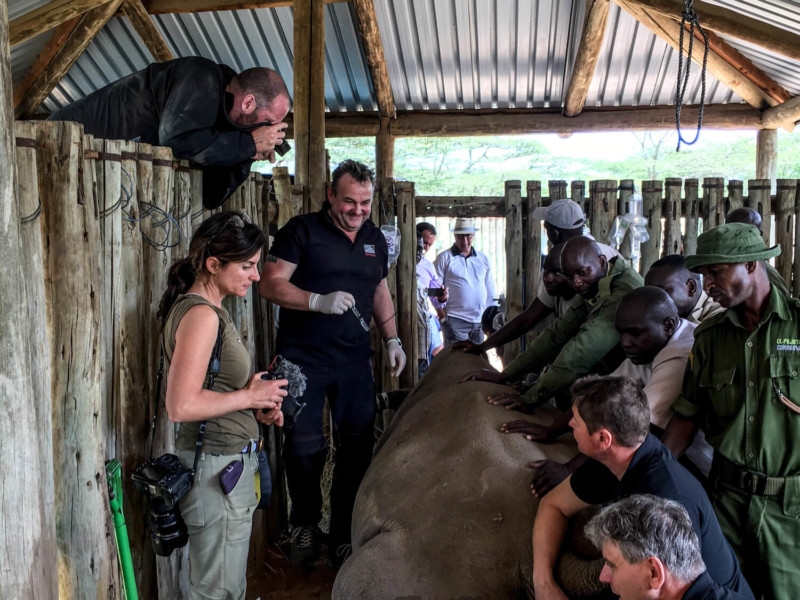
I discussed with them about where I could and couldn’t go and they assured me confidently that if I got too close or in the way, they would let me know. Many photographers feel entitled and can be quite aggressive, that isn’t my style nor was this the situation to do that. I respect these guys and was there because they granted me permission and obviously, their work is much more important than mine and the safety of the rhinos is paramount
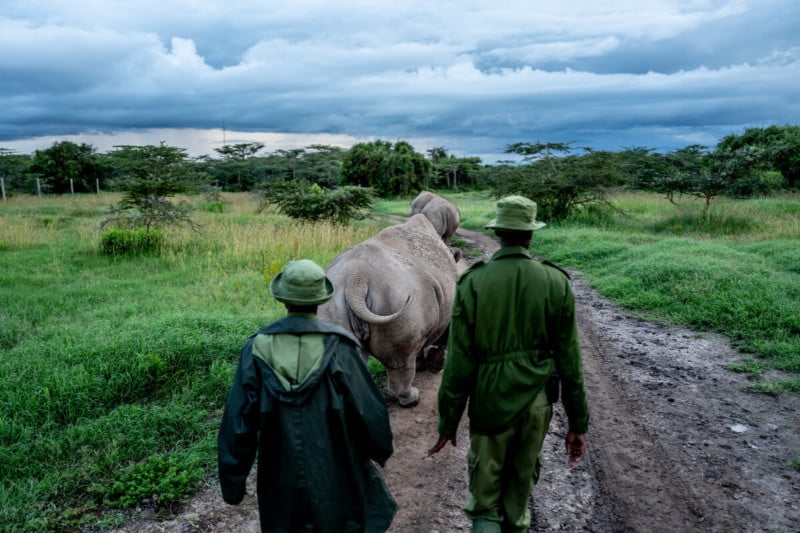
I was there a few days early to capture some moments between the caretakers and the rhinos before the procedure to help tell the story. Documenting before and after an event was something I learned from my professor at university and it’s always stayed with me. They were tense and obviously worried, the rhinos are like family to these guys as they spend more time with them than with their own families.
The day of the procedure was stressful for everyone, but it went smoothly. They operated on one rhino at a time and each procedure took a few hours to complete. By the second attempt, one of the veterinarians was encouraging and even inviting me to get closer. Being unobtrusive and respectful is the right thing to do and I’ve found it pays off a lot more than being aggressive and entitled.
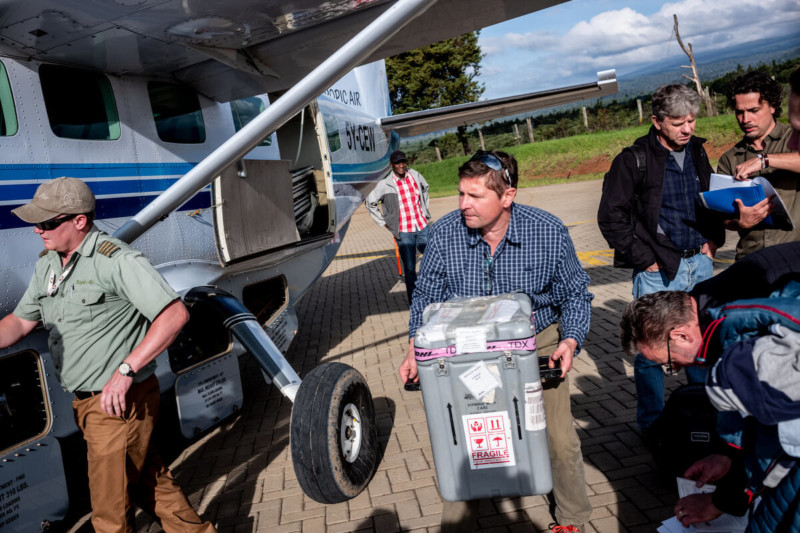
Just a few hours after the procedure was over I followed the team to the airport where they carried the extracted oocytes to a small plane on their way to Germany through Nairobi and I captured some crucial images to help tell this story.
At the request of the entire collaborative team involved, I waited for them to send out their press release before pitching the story around and sharing any images. After the embargo was listed, the Washington Post ran my images and interviewed me about the procedure. I found my minimalistic kit worked out well for me as it made my move more and think more.
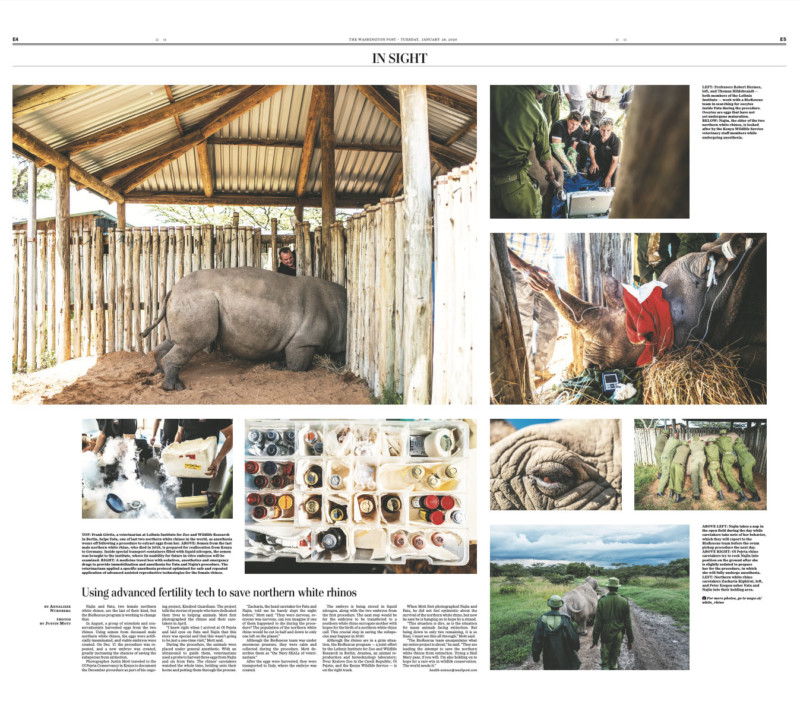
It was an incredible experience to document something so historical and I feel truly honored to be allowed to be there and I never forgot that or took it for granted. They still have a long way to go with this attempt to save the northern white rhino, but I intend to be there every step of the way.
As a documentary photographer, you need to recognize when a story has more to offer and find a way to be there when it does.
About the author: Justin Mott is an award-winning editorial, travel, and commercial photographer and director based in Vietnam for over a decade. The opinions expressed in this article are solely those of the author. Mott has shot over 100 assignments throughout Vietnam and Southeast Asia for the New York Times covering tragedy, travel, features, business, and historical moments. You can find more of his work on his website, YouTube, Twitter, and Instagram. This article was also published here.